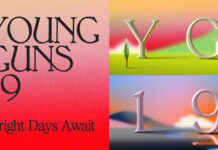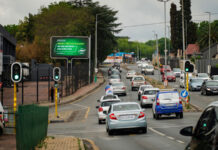The latest All Media and Products Survey (AMPS July 2011 to June 2012) by the South African Audience Research Foundation (SAARF), says the broad-strokes view of the media industry indicates that South Africa’s media players are showing positive audience results midway through the year. We re-produce the summarised results.
- Print maintains readership
Overall, print maintained its readership levels, despite the readership declines of both weekly newspapers and magazines. The medium’s resilience in the face of these losses was thanks to a strengthening of the daily newspaper sector.
TV & radio on the up
With more homes having TV sets than ever before, TV is once again on the rise, significantly growing its weekly audience.
Radio’s total listenership is trending up.
- OOH exposure increases
South Africans claimed to have had significantly more exposure to five of the seven formats measured for the out-of-home sector.
- Internet booming
The internet continues to boom, with growth occurring across a broad spectrum of society.
- Cinema decline halts
And finally, while cinema’s story is less bullish, the declines seen in the previous survey have nonetheless been halted.
Demographic data and media consumption results follow.
Demographic data
This report compares data from three AMPS releases:
- the current release, SAARF AMPS Jun 12 (July 2011-June 2012);
- the previous release, SAARF AMPS Dec 11 (January-December 2011); and
- the year previous release, SAARF AMPS Jun 11 (July 2010-June 2011).
All results are based on adults aged 15+.
Population
- AMPS Jun 12 shows a total population of 34,934-million adults, aged 15+, a figure which is unchanged from the previous survey.
- The same household population figure as AMPS Dec 11 also stands – 14,074-million.
Living standards measure (LSMs)
LSM 2 declined significantly over AMPS Dec 11, from 5.1% to 4.1%, while LSM 4 showed movement in the opposite direction, rising from 12.2% to 13.1% currently.
- LSM 1-4 = 25.2% of the total population;
- LSM 5-7 = 51.4%; and
- LSM 8-10 = 23.4%.
Underlining this upward trend in living standards, is the increased incidence of several durables in the home, as well as access to a number of basic services and amenities.
| AMPS Jun 11 | AMPS Dec 11 | AMPS Jun 12 | |
| Durables in the home | |||
| Electric stove | 63.70% | 65.40% | 65.50% |
| Microwave oven | 58.90% | 61.40% | 62.20% |
| Refrigerator | 81.90% | 82.70% | 83.50% |
| Deep freezer | 21.80% | 22.10% | 22.30% |
| Washing machine | 39.60% | 40.70% | 41.30% |
| Tumble dryer | 9.30% | 9.10% | 9.40% |
| AMPS Jun 11 | AMPS Dec 11 | AMPS Jun 12 | |
| Access to services/amenities | |||
| Water in house/on plot | 79.50% | 80.70% | 81.60% |
| Geyser – hot water | 40.10% | 41.20% | 41.30% |
| Flush toilet | 62.80% | 65.30% | 65.90% |
Household income
Average household income is R9 078 per month, an increase of 5.4% in a six-month period and ahead of annual inflation at 5.5%. In general, household income is showing an upward movement.
| AMPS Dec 11 | AMPS Jun 12 | |
| Up to R799 | 3.80% | 3.40% |
| R800-R1 399 | 11.10% | 10.00% |
| R1 400-R2 499 | 11.60% | 11.40% |
| R2 500-R4 999 | 20.40% | 21.00% |
| R5 000-R7 999 | 16.40% | 16.50% |
| R8 000-R10 999 | 11.80% | 11.90% |
| R11 000-R19 999 | 12.20% | 12.60% |
| R20 000+ | 12.60% | 13.10% |
Work status
The work status of South Africa’s adult population has remained static over the previous AMPS release.
- Working full-time: 26.2% (9,147-million), with declines in Gauteng.
- Working part-time: 8.6% (2,988-million).
- Not working (including those who are unemployed, retirees, students and housewives): 65.3% (22,799-million), with gains in Gauteng.
Education
In general, education levels are improving slowly. Basic literacy has improved significantly, from 98.0% previously to 98.4%. The unschooled portion of the population continues to decline: from 2.6% (900 000 adults) to 2.2% (785 000). Other levels of education remained stable overall.
Media audience results
This report compares data from three AMPS releases:
- the current release, SAARF AMPS Jun 12 (July 2011-June 2012);
- the previous release, SAARF AMPS Dec 11 (January-December 2011); and
- the year previous release, SAARF AMPS Jun 11 (July 2010-June 2011).
All results are based on adults aged 15+.
Only statistically significant differences are quoted, and are based on percentages,
not on number of people. Unless otherwise stated, all comparisons made are between the current release (AMPS Jun 12) and the previous (AMPS Dec 11).
Total print
Despite the significant decline of both weekly newspaper reading and magazine reading, print as a whole has maintained its readership, thanks to a strengthening of the dailies.
Print reaches 65.6% of the adult population, with an average issue readership of 22,925-million.
Overall, average issue readership for the last three surveys is:
| AMPS Jun 11 | AMPS Dec 11 | AMPS Jun 12 | |
| Daily newspapers | 30.30% | 30.80% | 30.90% |
| Weekly newspapers | 33.50% | 34.10% | 32.80% |
| Total newspapers | 48.00% | 48.90% | 50.00% |
| Magazines | 50.90% | 50.50% | 48.80% |
| Total newspapers/magazines | 64.90% | 65.80% | 65.60% |
Repertoire
The slow attrition of repertoire continues, with people reading slightly fewer titles on average than they did in the previous survey. On average, people read 3.96 print titles.
| Average number of publications read (based on readers) | AMPS Jun 11 | AMPS Dec 11 | AMPS Jun 12 |
| Total newspapers/magazines | 4.08 | 4.07 | 3.96 |
Reading platforms
Non-traditional reading is trending up. Paper has by no means been abandoned, with the entire newspaper and magazine reading base continuing to consume traditional paper products. Six percent of print readers however, now also read a newspaper or magazine online. This accounts for 4% of the total population.
The reading-on-a-cellphone audience is about half as big, with total cellphone reading at 2.1% of the total population, a figure which has also been trending up from a small base since AMPS Jun 11.
- Newspapers
South Africa’s newspaper market continues to hold its own, with the digital hurricane that’s raging in other parts of the world not yet making landfall locally.
Behind the steadiness of this medium’s consumption figures is a give-and-take game being played between the dailies and the weeklies; as the dailies strengthen, so the weeklies lag.
More readers have come through at the six-month filter, which is the section within the AMPS questionnaire where respondents commit to the titles they’ve read in the past six months. This increase was seen specifically for dailies.
These six-month gains did not however, filter through to average issue readership, leaving newspaper readership stable at 50.0%, with 17,463-million readers in total.
| Average number of publications read (based on readers) | AMPS Jun 11 | AMPS Dec 11 | AMPS Jun 12 |
| Daily newspapers | 1.34 | 1.34 | 1.34 |
| Weekly newspapers | 1.73 | 1.7 | 1.71 |
| Total newspapers | 2.12 | 2.1 | 2.08 |
Daily newspapersDespite gains at the six-month filter, the average issue readership of daily newspapers remains stable on the previous AMPS period. Dailies reach 30.9% of the adult population, or 10,808-million people.
Significant readership changes
Only one title showed any significant change in readership over the previous AMPS. New Age grew its readership base from 0.1% of the population, or 39 000 readers, to 0.2% (87 000 readers).
SA’s youngest member of the daily family gained readers in large urban areas, specifically in Gauteng (where reach rose from 50.1% previously to 59.7%). Increases have occurred across the sexes, in the 50+ age bracket (up from 23.0% of this age group, to 36.4%), and in LSM 8-10 (from 50.1% to 62%).
Weekly newspapers
Readership of weekly newspapers has declined, from 34.1% in AMPS Dec 11 to 32.8% currently, with 11,476-million readers. The decline was due specifically to a loss of female readers (from 27.9% to 26.0%), and a loss of readers in Limpopo.
At the six-month filter, readership remained consistent, but this could not offset the significant decline in average issue readership.
Significant readership changes
Only one title showed a significant change in average issue readership: Soccer Laduma, down from 9.1% previously to 8.1%. This decline could be due to World Cup euphoria finally coming to an end. The title’s loss of female readers, many of whom were likely add-on readers during the World Cup, supports this. There has also not been a great deal of positive soccer news coming out of South Africa in the last year. Other demographic shifts for this title include declines in large urban areas, in KwaZulu-Natal and in LSM 5-7.
Shifting audience profiles
A number of weeklies showed significant changes in one or more sectors of their audience, although their total readership remained stable. They are:
- City Press: up in metros;
- Ilanga LangeSonto: down in 35-49 year olds;
- Rapport: down in the Western Cape and female audiences;
- Sunday Sun: up in metros and Gauteng, but down in Limpopo; and
- Sunday World: up in large urban areas and on the Reef, but down in Limpopo.
- Magazines
Magazine readership has dropped, a decline that has come through almost entirely from rural areas, suggesting that economic considerations could be a root factor. Significant declines came through from the Northern and Eastern Cape, and Limpopo.
Average issue readership for magazines is 48.8%, down from 50.5% in the previous survey. Total readership stands at 17,031-million.
There are significantly fewer male readers in the audience base, declining from 50.4% in the previous survey to 48.4% currently. The number of younger readers has also declined: magazines now reach 54.7% of 15-24 year olds, down from 57.7% in AMPS Dec 11, while LSM 5-7 readership declined from 50.6% to 48.7%.
The entertainment/celebrity category of interest is one which has shown a number of individual title declines. Online celebrity news and scandal sites, and the availability of electronic programme guides, could be behind the erosion of this sector’s reach.
The family-interest category has also shown a number of declines, as has the general magazine sector. When times are tough, people might be choosing to prune the more general reads out of their repertoires, while holding on to the more targeted publications.
| Average number of publications read (based on readers) | AMPS Jun 11 | AMPS Dec 11 | AMPS Jun 12 |
| Magazines | 3.20 | 3.21 | 3.12 |
Weekly magazinesThis category of magazine has remained stable, maintaining its readership at 24.5%, with an audience of 8,553-million. There were however, declines in readership in KwaZulu-Natal and Limpopo, and in LSM 8-10.
Significant readership changes
- Finweek‘s reach has declined from 0.2% in the previous survey to 0.1%. Losses came from large urban areas, the female reading public, age 35-49, and LSM 8-10.
- Huisgenoot has seen its readership decline from 6.5% in the previous AMPS release to 5.9%. The publication lost readers in the Northern Cape, 25-34 year olds, and LSM 8-10 readers.
- People magazine lost readers in metros and LSM 8-10, bringing its average issue readership down from 4.2% to 3.7%.
- TVplus is down from 3.9% to 3.4%. Downward shifts occurred in metros in particular, the Northern Cape, and in the 50+ age group.
- Readership of You declined from 7.0% to 6.3%, with losses in rural areas (with KwaZulu-Natal the most affected), and in female readers.
Shifting audience profiles
- Move! is down in Limpopo.
Monthly magazines
As a group, monthly magazines have shown a significant decline over AMPS Dec 11, with average issue readership dropping from 37.8% to 36.1%, with 12,595-million readers. Readership in small urban and rural areas declined from 28.6% to 25.9%, with losses especially in the Northern and Eastern Cape. Male readership also declined, with monthlies now reaching 36.0% of adult men (down from 38.3% previously). There are fewer 15-24-year-old readers (down from 42.8% to 39.7%), as well as fewer LSM 5-7 readers (reach fell from 36.6% to 34.4%).
Despite the decline of the category in general however, a number of individual publications posted significantly increased readership figures compared to the previous survey.
Significant readership changes
- Bona‘s readership dropped from 10.8% in AMPS Dec 11 to 9.6% currently. Its readership base shows decreased audience in large urban areas, Soweto, the North West and the Northern and Eastern Cape, with fewer males, 25-34 year olds, and LSM 5-7s.
- Compleat Golfer has grown its audience from 0.1% to 0.2%, with 59 000 readers. Gains were made in small urban and rural areas, with 15-24-year-old and female readership growing (the title’s female audience increased from 13.1% to 17.6% of total readership).
- Die Tuinier‘s reach is up from 0.1% to 0.2%, with 66 000 readers. KwaZulu-Natal readership is significantly up.
- Readership is picking up for Longevity: up from 0.1% to 0.2% (56 000 readers). Gains came through particularly from KwaZulu-Natal.
- SA Hunter/SA Jagter is up from 0.1% to 0.2% (78 000 readers), with gains especially in the Free State.
- Women’s Health has grown from 1.1% to 1.4% (476 000 readers). Growth was seen in the Western Cape and in LSM 5-7.
Shifting audience profiles
- Dish/skottel has lost readership in Johannesburg and Pretoria, and in LSM 8-10. This title’s readership usually goes up with subscriptions, but for the first time, it is trending down, possibly due to the magazine’s format change earlier this year.
- GQ: up in Gauteng, 50+ and LSM 8-10;
- Marie Claire has fewer readers in the 35-49 age group;
- Rooi Rose: up in the Free State;
- Sarie: up in the Free State; and
- Your Baby and Toddler: up in Gauteng.
Alternate-monthly magazines
Readership of any alternate monthly magazine has declined from 6.8% to 5.4%. Total readership is 1,897 million. Losses were recorded especially in small urban and rural areas, the Northern and Eastern Cape, KwaZulu-Natal, Limpopo, and the North West, across the sexes, in the 15-24 and 35-49 age group, and in LSM 1-7.
Quarterly magazines
Quarterly magazine readership has declined from 2.7% previously to 2.1%, with a total readership of 728 000. Downward demographic shifts occurred in large urban areas and Gauteng, amongst females, in the 15-24 age group, and in LSM 8-10 (where reach was down from 7.0% to 5.2%).
- Television
(Please note that SAARF TAMS® is the official currency for television.)
As in previous AMPS releases, television is buoyant, although in this release, it did more than merely trend upward. The medium has grown significantly over AMPS Dec 11, with weekly viewership rising from 90.8% to 91.7%. TV now reaches 32,022-million adult South Africans (aged 15+) each week.Significantly more homes have TV sets: up from 87.0% to 88.6% (with gains in small urban and rural areas, KwaZulu-Natal in particular, and LSM 1-4). Having a TV in working order is also up, from 86.5% to 87.8%.
Gains for past-7-day TV viewing came through specifically from small urban and rural areas (LSM 1-4 viewing rose from 70.9% to 74.5%), from KwaZulu-Natal, and the female and 50+ demographic.
All three SABC stations are trending up, with e.tv showing significantly increased viewership.
Pay TV also posted significant growth, thanks to gains made by DStv, with Top TV holding steady.
Viewing of community TV has plateaued, reaching 8.6% of the adult population (2,990-million viewers) each week. This sector is driven almost entirely by Soweto TV, which reaches 7.7% of adults, and can be accessed in other provinces on the DStv platform.
Viewing platforms
South Africans continue to consume the medium along traditional lines. In the absence of true broadband, it is understandable that only 0.6% of the total population (217 000 people) watches programmes online, while 1% of the total population (334 000 people) watches TV on cellphones, in addition to viewing on TV sets.
Individual station/platform figures
(All viewing results for the SABC and e.tv are totals. Any viewing done via satellite TV has been added back to these channels’ viewing totals. The same is true for M-Net watched via DStv.)
All viewing quoted below is past-7-days (p7d), and for adults aged 15+.
- SABC 1: 79.8% (27,867-million adult viewers, aged 15+), with gains in KwaZulu-Natal.
- SABC 2: 71.6%, with 25,007-million adult viewers.
- SABC 3: 58.4% (20,389-million viewers), with growth in Gauteng.
- M-Net main channel: 6.8% (2,384-million), with increases in the Western Cape.
- Satellite TV is still on the rise. Viewing of DStv as a whole increased significantly over AMPS Dec 11. Weekly reach rose from 26.3% (9,198-million adults) to 27.5% (9,598-million). The platform grew its audience specifically in large urban areas, the Western Cape, and in LSM 5-7.
- Total Top TV: stable on 1.5% (513 000 viewers).
- Radio
(Please note that SAARF RAMS® is the official currency for radio.)
While not enjoying any statistically significant growth, total listenership for radio is nonetheless trending upwards, painting a healthy picture for the medium. Radio currently reaches 93.1% of the adult population (aged 15+) over a seven-day period, with listeners numbering 32,522-million.
Weekly listening to total commercial radio stands at 90.2%, with 31,506-million listeners in total.
Total community radio reaches 25.8% of the adult population (15+) over the course of the average week, with listeners pegged at 9,016-million.
Listening platforms
While traditional listening still dominates, radio has the highest cross-platform presence of any other traditional medium, with 26.0% of South Africans consuming radio on their cellphones, as well as on more traditional devices. Listening via this platform is significantly up on the previous survey.
Online listening is at 4.1%, while 0.5% of the adult population listens to radio on the DStv audio bouquet.
- Out of Home
(All formats mentioned are those which carry advertising. All figures reported are for exposure over an average week.)
- Weekly exposure to building wraps is up significantly on AMPS Dec 11, from 37.4% of the adult population to 39.5% (13,793-million). Growth took place across all community sizes, in the Northern Cape, Gauteng, and the North West, across both sexes, in the 50+ age group, and LSM 5-10.
- Bus shelters: stable at 38.1% (13,309-million people), with declines in the Free State, but with gains in the North West.
- Buses (with advertising on the outside): exposure to this form of outdoor rose from 44.1% in AMPS Dec 11 to 47% (16,424-million), with growth particularly in large urban areas, the Northern and Eastern Cape, KwaZulu-Natal, Gauteng and the North West, but with declines in Limpopo. The male and female demographics, 35+ age group, and LSM 5-10 also saw growth.
- More people claimed to see advertising on litterbins than in the previous survey: up from 51.7% to 54.3% (18,975-million). Gains were seen in large urban areas, the Northern Cape, KwaZulu-Natal, Gauteng and the North West (but with losses in Limpopo). Exposure was up across the sexes, from age 35+, and in LSM 5-10.
- Taxi ads: exposure grew from 75.1% in AMPS Dec 11 to 76.7% (26,782-million). Upward demographic shifts were seen in large urban areas, Mpumalanga, Gauteng and the North West, and amongst males, 15-24 years olds and those aged 50+, and in LSM 5-7.
- Exposure to total billboards/street pole ads/suburban signs climbed from 71.1% in the previous survey, to 72.7% currently.
- Trailer ads: stable at 31.4% (10,970-million). Exposure was down in KwaZulu-Natal, but up in the North West province.
- Internet
Almost 800 000 new internet users have joined South Africa’s online population since AMPS Dec 11. The latest AMPS release shows that 8,609-million adults now access the internet in a 12-month period, up significantly from the previous 22.4% of the total adult population, to 24.6%.
The digital advance has reached people across the country, with gains in access being seen in all communities, from the large urban areas right down to rural areas, in both the male and female demographic, amongst those aged 15-34 and 50+, and in LSM 5 up. Twelve-month internet access was also up significantly in the Western Cape and the North West province.
Other time filters showing significant gains include:
- The percentage of the population which accesses the internet “yesterday” grew from 11.7% to 13.4% (4,675-million).
- Internet access in the past four weeks rose from 19.8% to 22.2%.
- Cinema
Cinema continues to trend down in total, although the significant declines seen in the previous AMPS release have been halted.
Figures for cinema attendance over the following time periods are:
- Up to 7 days: 374 000 people, or 1.1% of the adult population (aged 15+)
- Up to 4 weeks: 1,420-million, 4.1%
- Up to 3 months: 2,913-million, 8.3%, with lower attendance in Mpumalanga in particular.
- Up to 12 months: 6,379-million, or 18.3% of the adult population.
*To order the AMPS CD log onto the SAARF website: www.saarf.co.za/orders/orderpublications.htm.




















































































